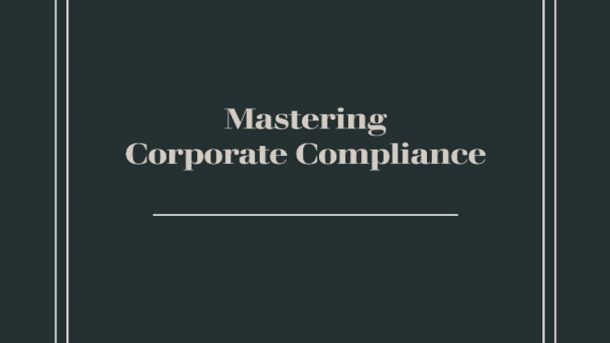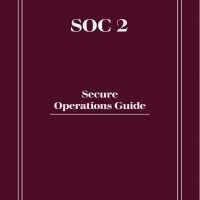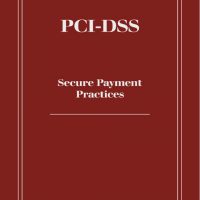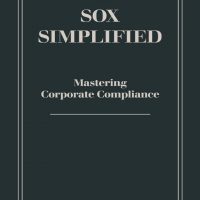SOX Simplified” by the author masterfully dissects the complexities of the Sarbanes-Oxley Act (SOX), offering readers a profound understanding of this pivotal legislation that reshaped corporate America. This book provides a thorough exploration, explaining the necessity of SOX in the wake of significant financial scandals, and is designed to make this complex subject approachable and engaging through clever analogies to the early days of computing.
From the start, “SOX Simplified” engages the reader with a narrative style that likens the pre-SOX corporate environment to the wild, early days of digital exploration—a world without stringent cybersecurity measures. This creative analogy not only paints a vivid picture of the times but also effectively parallels the lack of corporate governance that led to financial disasters. The narrative traces the evolution of corporate practices in a manner reminiscent of the evolution of technology, making the dense subject matter much more relatable and digestible.
The book is meticulously structured, beginning with a detailed history that sets the stage for understanding the origins and implications of SOX. The author skillfully draws parallels between historical technological advancements and shifts in corporate governance, illustrating how both fields have undergone transformations to incorporate safety and transparency as foundational elements. This approach not only enriches the reader’s understanding but also highlights the universal principles of risk management and ethical responsibility.
Each chapter of “SOX Simplified” is crafted to build upon the previous one, akin to a software program gradually increasing in complexity and functionality. The sections of the book break down the various aspects of SOX, from internal controls and auditor independence to financial disclosures and criminal penalties, with clear explanations and robust examples. This methodical breakdown serves to educate readers on the intricacies of SOX compliance, emphasizing its impact on corporate governance and the broader financial ecosystem.
What sets this book apart is its ability to translate the legal jargon and complex regulatory requirements of SOX into accessible, engaging language. The use of analogies and metaphors related to technology not only simplifies the concepts but also engages a broader audience, making it an excellent resource for both professionals within the finance and legal sectors and the general public interested in corporate ethics and governance.
“SOX Simplified” also offers practical insights and actionable advice, making it a valuable resource for implementing and understanding SOX compliance. The discussion extends beyond mere compliance, encouraging companies to leverage these regulations as a strategic advantage, enhancing corporate integrity, and building trust with stakeholders.
The book is an essential read for anyone looking to navigate the complexities of the Sarbanes-Oxley Act. Through its engaging narrative, comprehensive analysis, and practical guidance, the book not only demystifies SOX but also underscores the importance of transparency and accountability in today’s corporate world. The author’s approach makes this critical regulatory framework accessible and actionable, providing readers with the tools they need to understand and implement SOX in their professional lives.
An Interview with the Author
Interviewer: Thank you for joining us today. Your book “SOX Simplified” has garnered attention for its unique approach to explaining the Sarbanes-Oxley Act. What inspired you to write about this topic?
Author: Thank you for having me. My inspiration stemmed from noticing a significant gap in how SOX is typically presented—often as a complex, almost insurmountable set of regulations. I wanted to demystify SOX for a broader audience, making it as accessible and engaging as possible. By drawing parallels to the digital revolution and early computing, I hoped to provide a fresh perspective that resonates with people’s experiences and historical knowledge.
Interviewer: In your book, you compare the pre-SOX corporate world to the early, wild days of computing. How do you think this analogy helps readers understand the implications of SOX?
Author: This analogy serves to bridge the gap between complex legal concepts and more familiar technological advancements. By comparing the lack of corporate governance before SOX to the absence of cybersecurity in early computing, readers can see how both fields evolved out of a necessity to protect against systemic risks. This not only makes the material more relatable but also emphasizes the importance of proactive measures in preventing crises.
Interviewer: SOX compliance is often viewed as a burdensome necessity. How does your book address this perception?
Author: While it’s true that SOX compliance involves considerable effort, my book aims to shift the perception from seeing it merely as a regulatory burden to recognizing it as a cornerstone of ethical corporate practice. I discuss how implementing SOX can actually enhance a company’s reputation, improve operational efficiency, and build investor trust. Essentially, I argue that SOX isn’t just about compliance—it’s about cultivating a sustainable, transparent business environment.
Interviewer: Can you discuss the role of transparency and accountability in corporate governance as highlighted in your book?
Author: Absolutely. Transparency and accountability are the bedrocks of trust in any relationship, including between a corporation and its stakeholders. In “SOX Simplified,” I delve into how SOX has fundamentally changed corporate reporting, making businesses more accountable to their investors and the public. These changes are akin to how transparency in software development can lead to better products and more secure systems. By strengthening these aspects, corporations can not only comply with legal requirements but also foster a culture of integrity.
Interviewer: Lastly, how important do you think it is for professionals, not just in finance or law, to understand SOX?
Author: It’s very important. SOX affects a wide array of professionals, from accountants and auditors to IT specialists and senior executives. Understanding SOX is crucial for anyone involved in the broader ecosystem of corporate governance, as it informs their responsibilities and the ethical landscape of their work environments. Moreover, for anyone aspiring to leadership roles in corporate America, a thorough understanding of SOX is indispensable for making informed, ethical decisions.
“SOX Simplified” Part of the “Cybersecurity Compliance Navigator” Series
“SOX Simplified” is a featured volume in the “Cybersecurity Compliance Navigator” series, a comprehensive collection of guides designed to help professionals navigate the complex landscape of regulatory compliance. Alongside “SOX Simplified,” the series includes “NIST: The CISO’s Compass,” “PCI-DSS Decoded,” “HIPAA: Healthcare Privacy Strategies,” and “SOC 2: Secure Operations Guide.” Each book in the series addresses a different critical aspect of cybersecurity and compliance, offering insights and practical advice to ensure that organizations across various industries can meet their legal obligations while strengthening their security postures. This series is an invaluable resource for anyone involved in the protection of digital assets and compliance with regulatory standards.



















